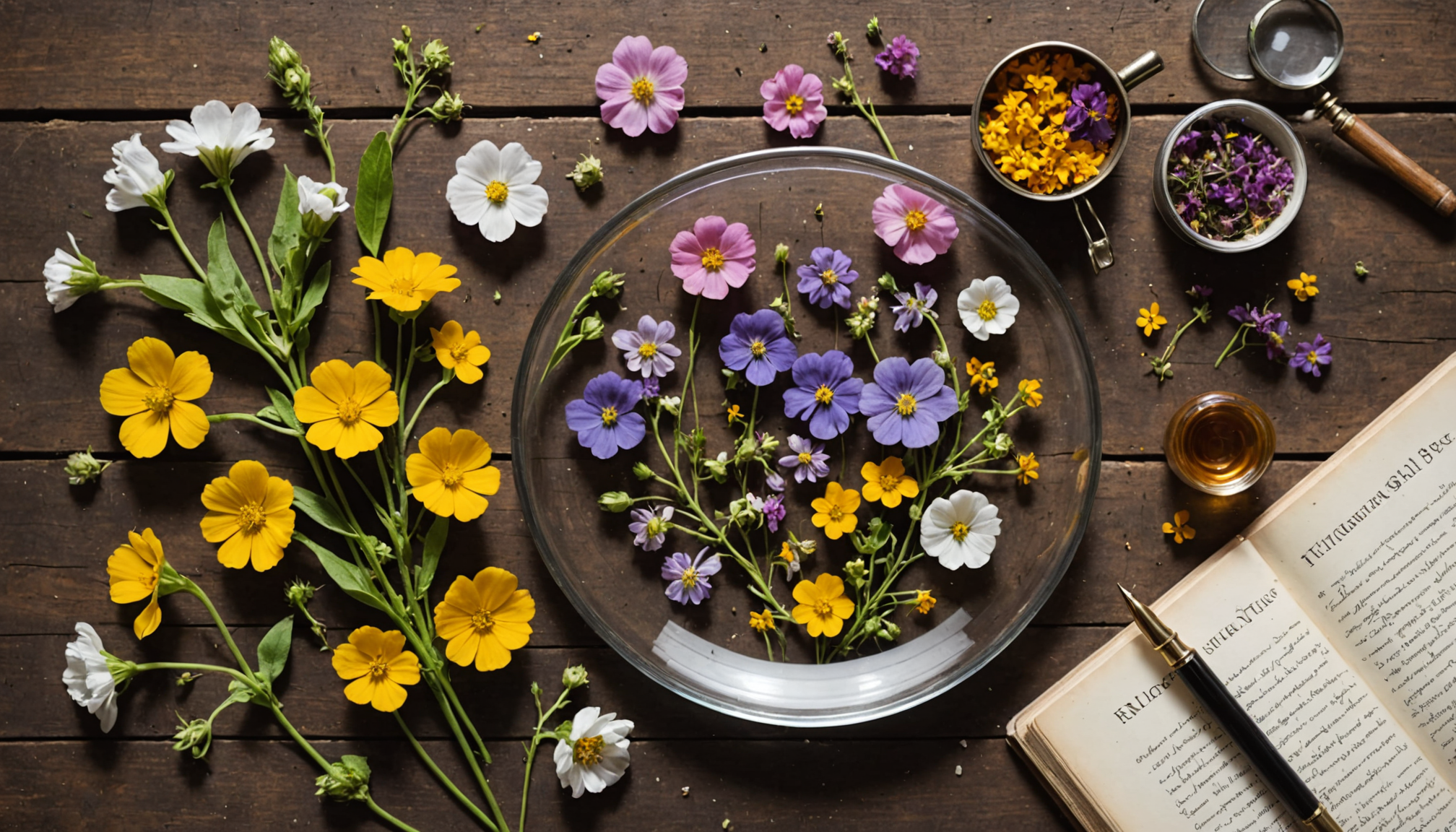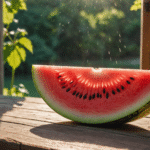- Selecting and identifying safe edible flowers
- Storage and preparation techniques
- Popular edible flowers and their flavors
- Creative ways to use flowers in cooking
- Safety precautions and potential allergies
When venturing into the world of edible flowers, it’s crucial to start with flowers you’ve either grown yourself or purchased from reliable suppliers who specifically cultivate flowers for culinary use. Never harvest flowers from roadsides, public parks, or areas that might have been treated with pesticides or chemical fertilizers.
The safest approach is to grow your own flowers in an organic garden. Start with easy-to-identify varieties like nasturtiums, pansies, or calendula. If you’re purchasing, look for suppliers who specialize in culinary flowers and ensure they’re labeled specifically for consumption – those pretty flowers from the florist aren’t meant for your plate!
Here’s a foolproof way to identify safe flowers for healthy eating:
- Verify the flower species using multiple reliable sources or gardening guides
- Check both common and botanical names to avoid confusion
- Ensure all parts you plan to eat are actually edible (some flowers are only partially edible)
- Start with young, fresh blooms at their peak
- Choose flowers free from spots, discoloration, or insect damage
When harvesting, pick your flowers in the morning after the dew has dried but before the day heats up. This is when they’re most flavorful and will stay fresh longer. Avoid any flowers that show signs of disease or pest infestation, and always leave enough blooms for pollinators and plant health.
Consider starting a dedicated edible flower garden section with clearly marked plants. This helps prevent any mix-ups and ensures you’ll have a steady supply for your culinary adventures. Remember that timing is everything – some flowers taste best just as they’re opening, while others develop better flavor when fully bloomed.
Storage and preparation techniques
Proper storage and handling of edible flowers is crucial for maintaining their freshness and ensuring they remain safe for consumption in your meals. After harvesting or purchasing, gently clean the flowers by dipping them in cool water or using a soft brush to remove any dirt or tiny insects. Avoid washing under running water, as this can damage delicate petals.
| Storage Method | Duration | Best Practices |
|---|---|---|
| Refrigeration | 3-5 days | Place between damp paper towels in an airtight container |
| Room Temperature | 1-2 days | Keep in water like cut flowers, away from direct sunlight |
| Freezing | Up to 6 months | Freeze in ice cubes or sugar syrup |
For immediate use in healthy eating, prepare edible flowers by removing the stamens and pistils, as these parts can be bitter and may cause allergic reactions in some people. The green sepals should also be removed unless specifically noted as edible. To preserve their shape and color, consider these preparation techniques:
– Crystallizing: Coat flowers with beaten egg white and fine sugar
– Drying: Hang upside down in a dark, dry place
– Pressing: Place between parchment paper and press in a heavy book
– Flash-freezing: Arrange on a tray and freeze before transferring to storage containers
When incorporating flowers into your cooking, it’s essential to prepare them just before use. For optimal flavor preservation, add delicate edible flowers as a final garnish rather than cooking them for extended periods. More robust varieties like calendula and nasturtium can withstand gentle heating.
To extend shelf life, store flowers in layers separated by paper towels to prevent moisture buildup and crushing. Some varieties can be preserved in vinegar or oil, creating beautiful and flavorful infusions for future use. Remember that wilted or discolored flowers should be discarded, as they may indicate spoilage or loss of nutritional value.
Popular edible flowers and their flavors

Let’s explore some of the most delightful edible flowers that can transform your meals into colorful, flavorful experiences. Nasturtiums are a perfect entry point into healthy eating with flowers – they offer a peppery kick similar to watercress, with vibrant orange, yellow, and red blooms that make any dish pop. Their entire plant is edible, from the flowers to the leaves, making them incredibly versatile.
Lavender adds a sweet, floral note with hints of citrus, but use it sparingly as its flavor can be intense. It’s particularly wonderful in desserts and teas. Calendula, often called pot marigold, brings a subtle saffron-like flavor and beautiful golden color to rice dishes and soups. The petals are slightly peppery with a hint of bitterness that adds complexity to salads.
Here are some other popular edible flowers and their distinct flavors:
- Borage – Fresh cucumber taste with beautiful blue flowers
- Chamomile – Sweet, apple-like flavor perfect for teas
- Squash blossoms – Delicate, slightly sweet with a hint of raw squash
- Violets and pansies – Mild, sweet flavor with a slight wintergreen note
- Rose petals – Ranging from sweet to spicy depending on variety and fragrance
Chive blossoms pack a delightful oniony punch that’s milder than the stems, making them perfect for sprinkling over potato dishes or incorporating into cream cheese spreads. Dandelion flowers offer a surprisingly sweet honey-like taste when young, though they become bitter as they age.
Many herb flowers mirror the flavors of their leaves but in a more delicate form. Basil flowers taste like a gentle version of the leaf, while oregano blossoms bring a subtle oregano flavor that won’t overwhelm your dishes. These make excellent last-minute additions to pasta dishes or salads where you want hints of herb flavors without the full intensity of the leaves.
Creative ways to use flowers in cooking
Transform your meals into stunning culinary works of art with these innovative techniques for incorporating edible flowers.
“Flowers bring a unique combination of flavor, fragrance, and visual appeal that can elevate even the simplest dish into something extraordinary.” – Chef Alice Waters
- Basic Incorporation Methods:
- Float delicate petals in clear soups or cocktails
- Press whole flowers into homemade pasta
- Freeze blooms in ice cubes for elegant beverages
- Fold petals into soft cheese or butter
- Advanced Culinary Applications:
- Create flower-infused honey or simple syrups
- Layer petals in homemade chocolates
- Incorporate into compound butters
- Mix into cake batters or cookie dough
Transform your healthy eating routine by incorporating edible flowers into everyday dishes. Try sprinkling calendula petals over morning yogurt, adding borage flowers to summer salads, or decorating rice bowls with johnny-jump-ups. For special occasions, crystallized violets make stunning cake decorations, while nasturtium flowers can add a peppery kick to canapes.
Consider texture when adding flowers to your cooking. Sturdier blooms like day lilies can be stuffed and baked, while delicate petals from roses or pansies work better as fresh garnishes. Create visually striking presentations by matching flower colors to your dish components – try purple chive blossoms on orange sweet potato soup, or yellow calendula petals on deep green salads. Remember that edible flowers aren’t just garnishes; they can be essential ingredients that contribute both flavor and nutritional value to your meals.
Safety precautions and potential allergies
 Before incorporating any edible flowers into your meals, understanding potential risks and taking proper precautions is essential for healthy eating. Always verify that you’re absolutely certain about a flower’s identity, as some toxic flowers closely resemble edible varieties. Keep a comprehensive reference guide handy and never consume flowers unless you’re 100% confident in their identification.
Before incorporating any edible flowers into your meals, understanding potential risks and taking proper precautions is essential for healthy eating. Always verify that you’re absolutely certain about a flower’s identity, as some toxic flowers closely resemble edible varieties. Keep a comprehensive reference guide handy and never consume flowers unless you’re 100% confident in their identification.
Start with small quantities when trying new edible flowers, as individual reactions can vary. People with pollen allergies, asthma, or hay fever should be particularly cautious and may want to consult their healthcare provider before experimenting. Remove all pistils and stamens from flowers before consumption, as these parts often contain the highest concentration of allergens.
Be mindful of these critical safety guidelines:
– Only consume flowers grown specifically for culinary use
– Avoid flowers from florists, garden centers, or roadside vendors
– Never eat flowers treated with pesticides or other chemicals
– People taking certain medications should check for potential interactions
– Pregnant or nursing women should exercise extra caution
– Keep detailed records of any adverse reactions
Some common flowers can cause specific reactions:
– Marigolds may trigger reactions in people allergic to ragweed
– Chamomile might affect those with daisy family allergies
– Rose petals could cause reactions in people sensitive to stone fruits
– Squash blossoms may trigger cucumber or melon allergies
Store all edible flowers separately from non-edible varieties to prevent cross-contamination. Label everything clearly and maintain a clean, organized preparation area. When serving to others, always inform them about the presence of flowers in food, as some may have unknown allergies or sensitivities.
If any adverse reaction occurs, such as tingling in the mouth, swelling, or digestive issues, discontinue use immediately and seek medical attention if symptoms are severe. Keep a detailed log of which flowers you’ve tried and any effects experienced to help identify patterns or sensitivities.


